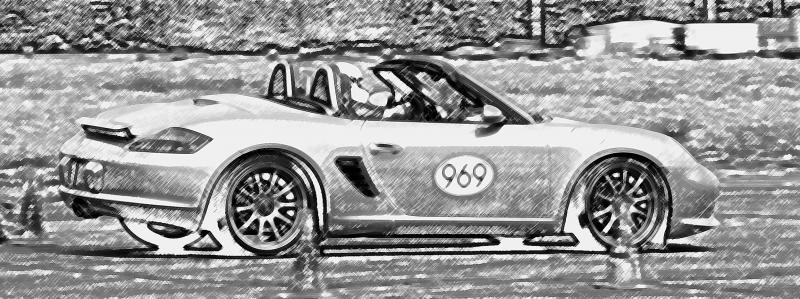Digitizing The Car: Why Auto-Makers Are On The Wrong Track

I’m a bit of a car nut. I love driving cars. So does my wife. We both autocross one of our cars most weekends in the New England summers (FYI AutoX is a great way to hone your driving skills and be a safer driver). We love our cars and I’m pretty passionate about the whole driving experience.
As a car junkie, I love the fact that automakers are bringing digital experiences to their cars, but I can’t help thinking they are going about it all backwards – or as we say at Forrester, from the inside out.
In my post from CES this year, I noted that every single automaker seems hell-bent on making the car the center of their customer’s digital world. No doubt manufacturers hear the siren call of customer data; imagining all that they could do with such rich information. But it’s inside-out because, even for car-lovers like me, the car is not the center of my digital universe and I doubt it ever will be. Why? Because my car doesn’t go with me wherever I go. But you know what does? My phone.
To become truly outside-in, automakers must begin to understand that it’s the customer’s own digital ecosystem they should be trying to fit into the car, and not trying to get the customer to fit into the car’s digital world. If automakers want to win over customers in the future, they must become much more outside-in when designing the driving experience. They should design the car to slip seamlessly into the customer’s digital world.
What would a more customer-centric design experience look like? Maybe something like this:
- We’ll begin with the understanding that the customer’s smartphone is the key to unlocking value for each individual. We will need to understand all the apps our customers currently use to achieve the outcomes they most desire.
- Next, we can build an app to tailor the driving experience to each customer; let’s call it “MyBMW” (it could be “MyFord” or “MyGM”; I’m unbiasedly lumping them all in the same bucket here – perhaps with the exception of Tesla … but even Tesla’s not fully outside-in). What does MyBMW do for me?
- It allows me to completely customize my car to my preferences. When I plug my phone into the car’s USB port, or hookup via bluetooth, all of my settings instantly transfer to the car from the MyBMW app, and the car is fully customized to me.
- If I change a setting in the car while driving, the app monitors this and will ask me after the trip if I’d like this to be my new default or, if I’d like to store the setting under a different profile. For example, when I autocross I turn off all traction control, but I would never do this on the highway. I would have an autocross profile that sets up the car the way I like it to maximize agility and driver control.
- Now here’s the neat bit. When I get into my wife’s car and plug in my phone, since she also drives a BMW, all of my settings transfer and her car is instantly customized to me. And when I rent a car, as long as it’s a BMW, the same happens. (Of course I’m sure the marketers reading this will have quickly picked up the potential for increased brand loyalty in families. Likewise rental companies could gain greater loyalty by allowing customers to specify a manufacturer or brand so that their app will be compatible).
- The next steps as a designer might be figuring out if we can integrate with other apps in the customer’s personal digital ecosystem to create even more value for the customer. For example, at CES VW touted the ability to integrate the car to the smart-home. They showed a digital doorbell with a built-in camera displaying the person calling at the driver’s home popping up on the car’s display. Pretty cool … but here’s the thing, it doesn’t need to be built into the car’s own systems. A more customer-centric approach would be to design the car to bring the customer’s entire phone app ecosystem onto the dashboard in ways customers find useful (and safe):
- If a customer prefers to use Waze for navigation, let’s display the Waze app on the car’s monitor. (From personal experiences I have on-board navigation in my cars but I still prefer to use Waze. Unfortunately, that means I can’t display my phone’s Waze map on my car’s display. So I have this nice in-car nav’ display, but I also need a stick-on window mount for my iPhone so I can use Waze.
- If a customer wants to integrate OBD analysis into their smartphone, why not display the same info on the car’s display. Why make customer’s buy a third party OBD reader?
To become truly customer obsessed, we must put the customer, and their digital ecosystem, at the center of our design process (and not our product). Only then can we truly understand that the customer’s world doesn’t revolve around our products.
Ask yourself “is our company truly outside-in? What are the outcomes our customers desire?” – even better, go ask your customers. Then figure out how to design and create digital experiences that help your customers attain these outcomes better than anyone else.
Have you seen examples of great customer-centric design that integrates your digital ecosystem? Please post your comments below.
Previous post: Digital Innovation Labs For Customers – Do They Inspire?
Next post: Envision 2016: Microsoft Pushes Beyond IT